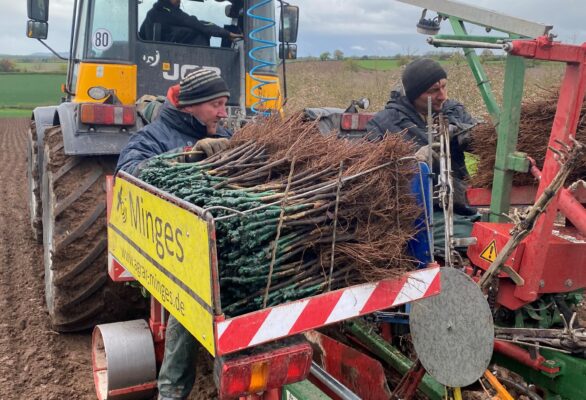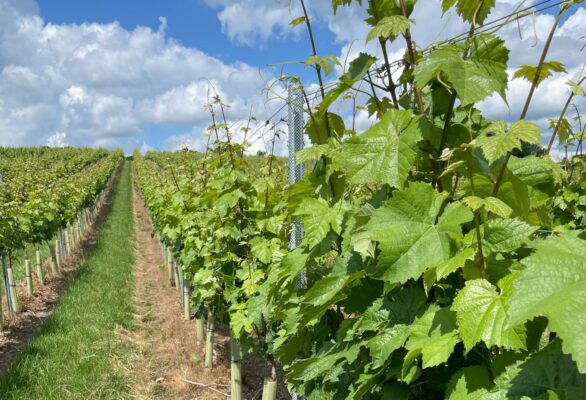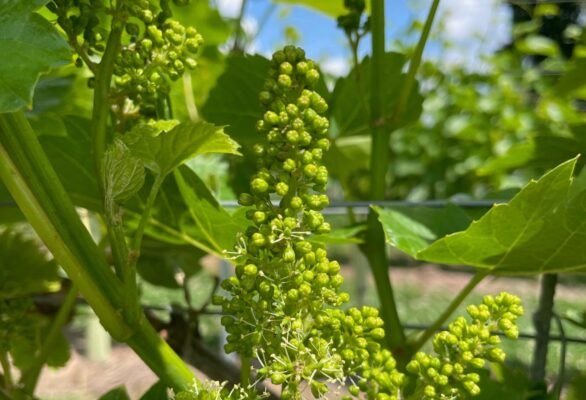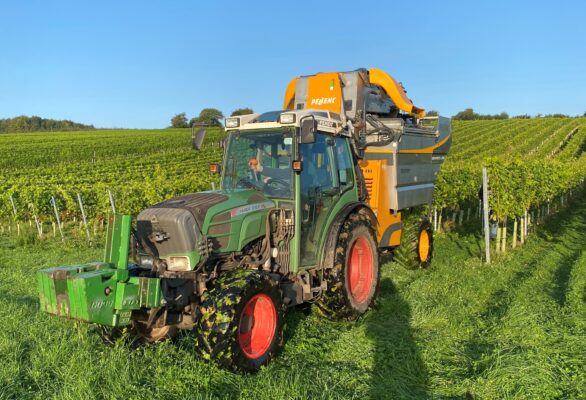The exciting advent of vineyards on the White Heron Estate has been enabled by the slightly warming climate. Although we don’t live on a chalk seam, our terroir is good for vines and we have now planted around 30 acres. Following extensive land and soil surveys we were excited to discover that our elevation and our soils are perfect. The south/south east facing slopes maximise the light and drainage; and with the panoramic views from the Clee Hills to the Black Mountains this is the perfect setting for our vineyard table. For other parts of the farm go to whole farm, environment, blackcurrants, apples, vineyards, other enterprises and White Heron Drinks.




